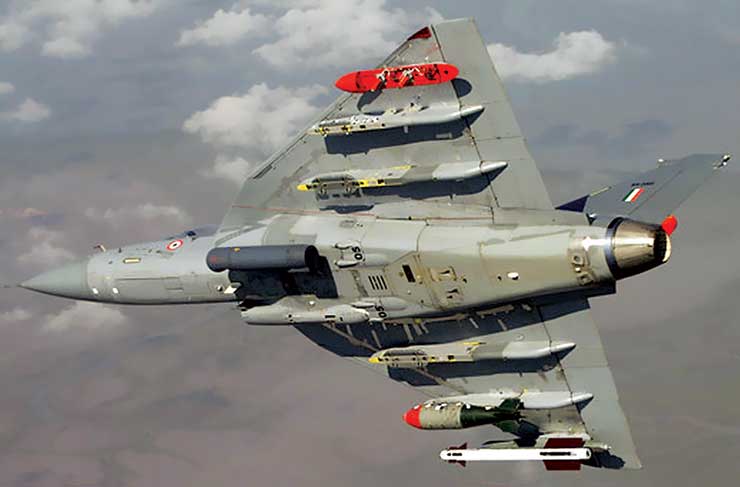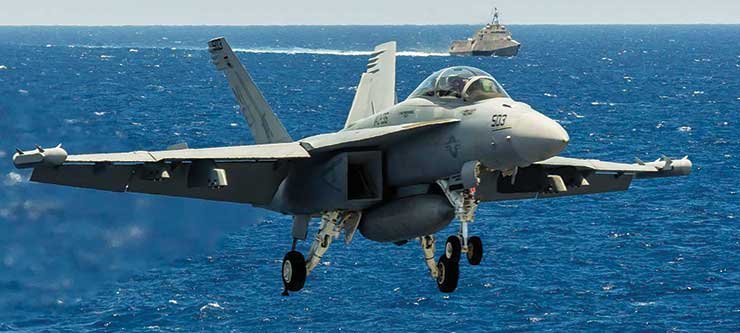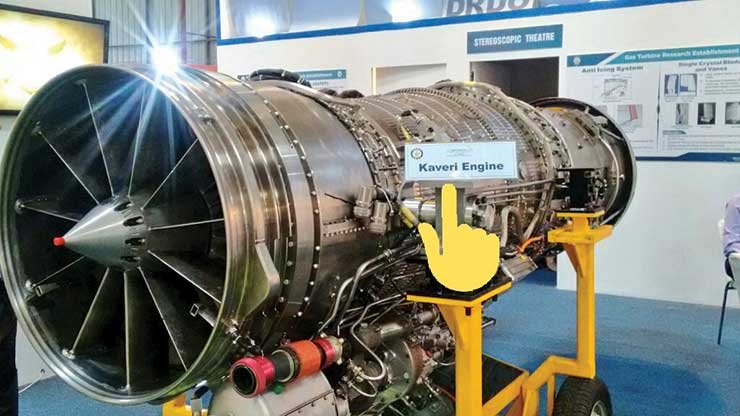
All major aerospace powers have possessed the capability to design airframes as well as power-plants and till such time that India can design and produce its own aero-engines, the performance and capabilities of any indigenously designed or built aircraft will be seriously limited by the technology that we are permitted to import. India has already had two bitter experiences in this regard. The Hindustan Aeronautics Limited’s sleek and elegant HF-24 Marut fighter (1960s and 1970s), failed to achieve its huge potential as a supersonic fighter for want of a suitable engine. Rather than exert itself to seek alternatives, the government of the day, with stunning myopia, closed the programme.
Similarly, many of the problems the Tejas faced emanate from lack of engine thrust. Even as the Kaveri has failed to make an appearance, US-made alternatives such as the General Electric F-404 engine, or even the more powerful F-414, do not deliver adequate thrust for the Tejas Mk 1, to meet all its missions. For the Tejas Mk IA, Mk II, the LCA Navy, and other aircraft programmes such as the Advanced Medium Combat Aircraft, India will need turbo-jet engines of even greater thrust. Thus, it is vital for India to develop a family of homegrown jet engines to power indigenous combat aircraft as well as re-engine imported ones.
A Pivotal Role
In this context, it is necessary to recognise that both the Tejas and Kaveri projects — which have seen more than their share of headwinds and uncertainty — form key components of India’s technological aspirations. Unless carefully guided, protected and nurtured, their failure could spell the end of India’s aeronautical industry, or condemn it forever to licensed production. A long production run of, say, 250-300 aircraft for the Tejas and its advanced derivatives is essential if the industry is to hone its design and production skills.

The same holds well for the Kaveri, except that the design and production of a functional turbojet engine are even more challenging. The HAL claims to have “manufactured” nearly 5,000 aero-engines of British, French and Russian design, and overhauled 18,000 of them. Since this putative “manufacturing” process involves merely the assembly of imported components, several engine divisions of the HAL have failed to imbibe aspects of design, metallurgy, thermodynamic and aerodynamic engineering as well as the complex tooling and machining process required for the design and manufacture of aero-engines, over the past 60 years — a sad commentary.
In 1986, the DRDO’s decades-old Gas Turbine Research Establishment (GTRE) was tasked with developing an indigenous power plant for the LCA, which was to replace the US engines being used for the development phase of the aircraft. Having developed two experimental engines, the GTRE took up a turbofan design, designated the GTX-35VS “Kaveri”, for the LCA. Full-scale development was authorised in 1989 for 17 prototypes at a cost of $55 million. The first complete prototype Kaveri began tests in 1996, and by 2004 it had flown on a Russian flying test-bed; albeit unsuccessfully. Since then, the Kaveri has made sporadic progress and the GTRE has been struggling with serious design and performance issues which it has been unable to resolve. As the Kaveri missed successive deadlines, the U.S. import option was mindlessly and gleefully resorted to.
A Series of Troughs
Given the DRDO’s penchant for secrecy and misplaced optimism, the true story of the Kaveri’s halting progress has never been revealed to Parliament or the taxpayer. However, two details, available on the Internet, are revelatory of the organisation’s ‘modus operandi’. It has, at least, on two occasions, approached French and British aero-engine manufacturers for advice and consultancy in operationalising the Kaveri. Despite reportedly attractive offers of performance-enhancement and technology-transfer, the negotiations stalled reportedly on cost considerations. It is also interesting to note that in 2014, this project — of national importance — was arbitrarily shut down by the DRDO only to be revived subsequently for reasons unknown.

Recently, it was reported by media that the talks with Safran to develop the indigenous Kaveri fighter jet engine with the help of French technology (as part of the Rafale offsets deal) have fallen through due to prohibitive pricing.
It is obvious that the onus for repeated setbacks in these projects must lie squarely on India’s political leadership; for its neglect as well as absence of a vision for the aeronautical industry. There are three more factors: over-estimation by the DRDO of its capabilities compounded by a reluctance to seek advice; inadequate project management and decision-making skills of its scientists; and exclusion of users — the military — from all aspects of the projects.
It is still not too late for the government to declare both these projects as ‘national missions’ and initiate urgent remedial actions. The success of both the Kaveri and Tejas programmes will transform the aerospace scene, and put India in the front ranks of aeronautical nations, perhaps even ahead of China, if the desired degree of resolve and professional rigour can be brought to the fore. If we miss this opportunity, we will remain abjectly import-dependent forever in this vital area.
-The author is a retired Navy Chief








